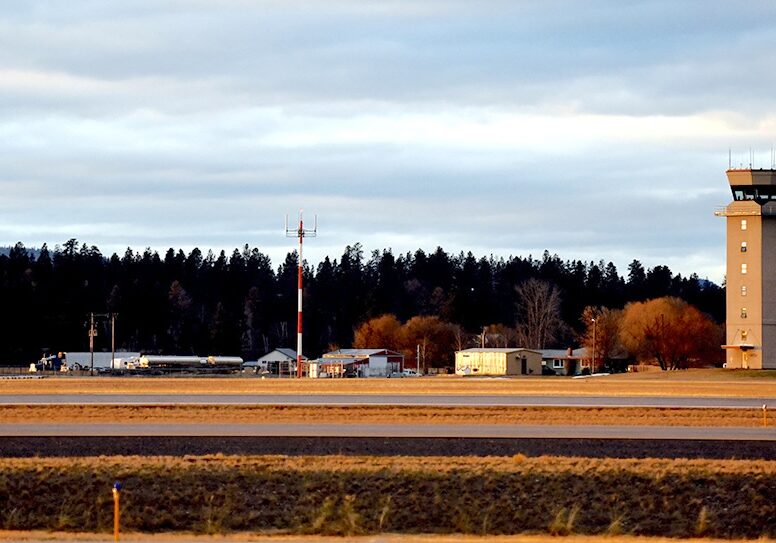Glacier Park Airport Gets Aviation Safety Upgrade Set for Nationwide Deployment
Bigfork-based uAvionix becomes first company to win federal approval for contract tower surveillance systems
By Staff Writer
Oct 14, 2025
KALISPELL — A Bigfork-based aviation technology company has become the first to receive federal approval for surveillance systems that could dramatically improve safety at dozens of airports nationwide that currently operate without radar.
uAvionix Corporation announced Monday it received Federal Aviation Administration approval in August for its FlightLine Airborne Position Reference Tool, with Glacier Park International Airport becoming the first to install the new technology.
The approval addresses a critical safety gap affecting 91 contract airports across the United States, where air traffic controllers currently work without surveillance systems — essentially directing aircraft they cannot see on radar.
“Historically, controlling without surveillance tools, particularly in regions with challenging terrain and low visibility, has presented significant limitations,” said Dave Ritchey, Director of Aviation for Serco North America, which provides air traffic control services at Glacier Park International and numerous other airports. “For years, Contract Tower controllers across the country have requested radar or situational awareness systems; however, the FAA had not authorized the use of these commercial off-the-shelf products in Contract Towers.”
How the Technology Works
The uAvionix system provides real-time aircraft position information by collecting data from aircraft transponders that broadcast location, altitude and speed — technology known as ADS-B that has been required on most aircraft since 2020. The system then displays this information on web-based screens that controllers can view in the tower.
Currently, controllers at contract towers rely primarily on visual contact with aircraft and radio communication to manage air traffic. The new system gives them the same type of situational awareness displays used at major airports with full radar coverage.
“The system will significantly enhance operational airport safety and efficiency by providing controllers with a real-time visual aid to display aircraft positions tailored to the local airspace environment,” according to uAvionix.
The technology helps controllers identify aircraft not in communication with the tower, validate possible transponder problems, assist distressed aircraft and provide traffic and terrain information to pilots.
Local Company, National Impact
The approval represents a significant achievement for uAvionix, which has built expertise in aviation surveillance technology from its Flathead Valley headquarters.
“Receiving the FAA’s System Design Approval for FlightLine APRT is a monumental achievement that underscores our commitment to enhancing aviation safety and efficiency and supporting the overhaul of the US ATC system,” said Paul Beard, Chief Technology Officer at uAvionix Corporation. “We are immensely proud to deploy this critical safety tool first at our hometown airport of Glacier Park International Airport in Montana.”
The company already has surveillance systems installed at more than 14 FAA towers and has signed contracts with a dozen additional airports for the new contract tower technology.
“Glacier Park International Airport is proud to be the first airport to receive this valuable safety upgrade for our tower,” said Rob Ratkowski, Airport Director. “We care tremendously for the safety of the flying public, airlines and pilots and we’re happy to be partnered with a local Flathead Valley based company.”
Rapid Deployment Planned
The system is designed for quick installation without major disruptions to airport operations, a critical advantage for busy airports. uAvionix said it will begin installations at contracted airports immediately.
Contract towers are typically found at smaller airports that handle commercial airline service, general aviation and flight training. Unlike major airports with FAA-operated towers that have full radar coverage, contract towers have traditionally operated with minimal technological support.
The approval comes as the FAA works to modernize the nation’s air traffic control system, moving toward satellite-based navigation and surveillance technologies that provide more precise aircraft tracking than traditional ground-based radar.
Categories: Business, Transportation
Don’t miss the week’s top Montana stories
Join readers across Montana who rely on WMN for independent reporting.
Unsubscribe anytime. Want to support WMN? Upgrade for $4/month →





